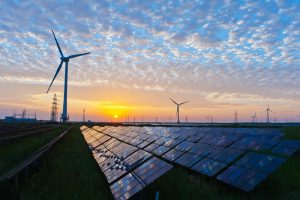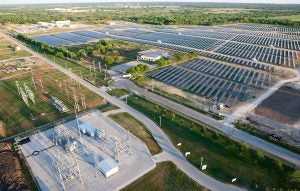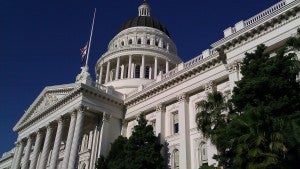 The late California historian Kevin Starr once wrote, “California had long since become one of the prisms through which the American people, for better and for worse, could glimpse their future.” These words have never felt truer. Just ask Gov. Jerry Brown or the leaders of the state legislature, who are all issuing various calls to action to protect and further the state’s leading climate and energy policies.
The late California historian Kevin Starr once wrote, “California had long since become one of the prisms through which the American people, for better and for worse, could glimpse their future.” These words have never felt truer. Just ask Gov. Jerry Brown or the leaders of the state legislature, who are all issuing various calls to action to protect and further the state’s leading climate and energy policies.
California is the sixth largest economy in the world and the most populous state in the nation. What’s more, we’ve shown that strong climate and energy policy is possible while building a dynamic economy. We’ve proved that clean energy creates far more jobs than fossil fuels – nationwide, more than 400,000, compared with 50,000 coal mining jobs – while protecting the natural world for all people.
It’s no shock our leaders are fired up. There’s too much at stake. With our state’s diverse, booming yet unequal economy, we are not unlike the rest of the nation. State-level leadership is more important than ever, and other states can and should learn from California to drive action across the U.S. Read More










 California’s three major utilities – Pacific Gas & Electric (PG&E), Southern California Edison (SCE), and San Diego Gas & Electric (SDG&E) – have proposed plans to move Californians to electricity prices that vary with the time of day.
California’s three major utilities – Pacific Gas & Electric (PG&E), Southern California Edison (SCE), and San Diego Gas & Electric (SDG&E) – have proposed plans to move Californians to electricity prices that vary with the time of day.  New installed renewable energy capacity surpassed coal for the first time last year, the International Energy Agency
New installed renewable energy capacity surpassed coal for the first time last year, the International Energy Agency  If you are anything like the typical Californian, you likely took the opportunity to get outside this summer and explore the great outdoors. Chances are you also took plenty of insect repellent to avoid becoming the latest offering at the mosquito buffet. Here in the Golden State, the California Public Utilities Commission (CPUC) is also fighting off BUGs – lest you think the CPUC is branching out into new regulatory territory, they are targeting the kind that harm our environment and public health: back-up generators (BUGs) that run on fossil fuels.
If you are anything like the typical Californian, you likely took the opportunity to get outside this summer and explore the great outdoors. Chances are you also took plenty of insect repellent to avoid becoming the latest offering at the mosquito buffet. Here in the Golden State, the California Public Utilities Commission (CPUC) is also fighting off BUGs – lest you think the CPUC is branching out into new regulatory territory, they are targeting the kind that harm our environment and public health: back-up generators (BUGs) that run on fossil fuels. By Gabriela B. Zayas del Rio, Tom Graff Diversity Fellow, Clean Energy
By Gabriela B. Zayas del Rio, Tom Graff Diversity Fellow, Clean Energy After a long and hard-fought legislative session, the dust is settling in California’s capitol. Many forward-looking clean energy bills sit on Gov. Brown’s desk, while others did not make it that far. It’s a time when legislative staff and advocates step back, breathe a sigh of relief, and take stock of what has been accomplished, what was lost along the way, and – most importantly – what remains to be done.
After a long and hard-fought legislative session, the dust is settling in California’s capitol. Many forward-looking clean energy bills sit on Gov. Brown’s desk, while others did not make it that far. It’s a time when legislative staff and advocates step back, breathe a sigh of relief, and take stock of what has been accomplished, what was lost along the way, and – most importantly – what remains to be done.